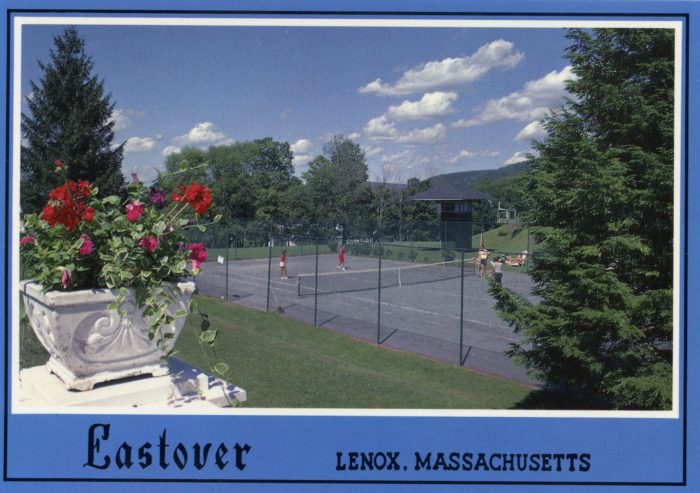History of Eastover
In 1910, Harris Fahnestock Jr., a stockbroker from New York City, began to build a summer home named “Eastover” for his family on 1,500 acres of land in Lenox, MA.
Fahnestock called upon Hoppin & Koen, an architectural firm that also built author Edith Wharton’s home, the Mount (also in Lenox), to design the buildings for the Estate. Hoppin & Koen designed the brick Georgian-style Mansion, a stable (which has since been renovated into the Berkshire’s largest open meeting space), a chauffer’s home, an eight-car garage, and a pump house used to store 20,000 gallons of water for use on the property.
Beatrix Farrand, the niece of Edith Wharton and the designer of over 100 gardens, including two of the White House as well as many others of Ivy League universities and major cities, was set to design the garden at Eastover.
After two years, when the estate and gardens were finally finished, the Fahnestock family enjoyed the property in the summers by hosting lavish parties both inside the 30 room mansion and outside in the gardens and were tended to by 65 servants.
In 1941, after Harris Fahnestock Jr. passed away, the heirs of Harris Fahnestock sold Eastover at an auction. It served briefly as the Duncan School for Boys, and then was sold to George Bisacca in 1946. Eastover, by that time, had been reduced to 500 acres.
For the next 62 years, Eastover served as a year-round recreational family resort, and also housed one of the largest Civil War collections in the country. This resort became an icon in Western Massachusetts and hosted generations of graduation parties, corporate picnics, reunions, and also served as a popular BYOB dance and music venue.
The property again changed hands in 2010 with the current owners purchasing what was by then a 400 acre estate. They have been extensively renovating the property ever since, and have added 200 acres, in order to bring a tranquil and rejuvenating environment for hosting holistic retreats.

